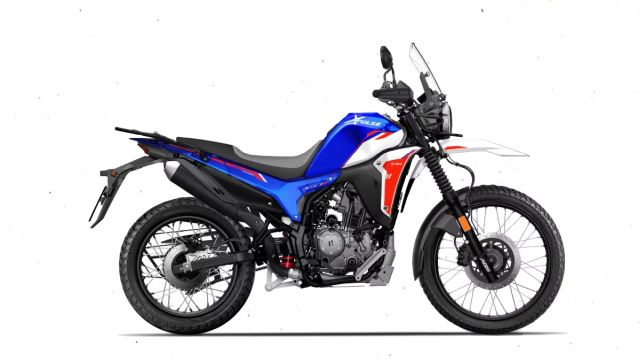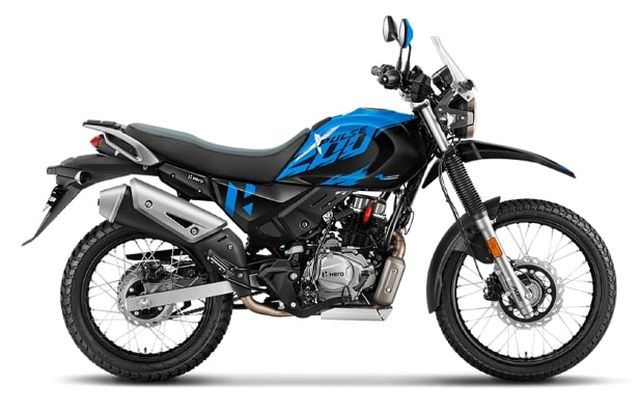The highly anticipated Xpulse 210 was launched at the Bharat Mobility Global Expo 2025 which got us wondering just how much has changed.

The name Xpulse resonates in the world of dual-purpose bikes. Previously, Hero took over the market with the legendary Impulse which was then eventually updated to the Xpulse 200 then the Xpulse 200 4V and now, finally we have the Xpulse 210. Let’s take a look at what is different and what has changed in the new Xpulse.
| Powertrain | Xpulse 200 4V Pro | Xpulse 210 (Top Spec) |
| Type | Air-cooled with oil-cooler, four-valve, single-cylinder OHC | Liquid-cooled, four-valve, single-cylinder DOHC |
| Capacity | 199.6 cc | 210 cc |
| Compression Ratio | 10.5:1 | 12:1 |
| Power | 19.2 hp at 8,500 rpm | 24.6 hp at 9,250 rpm |
| Torque | 17.35 Nm at 6,500 rpm | 20.7 Nm at 7,250 rpm |
| Transmission | Five-speed constant mesh | Six-speed with assist-and-slipper clutch |

While both motorcycles have similar capacity engines, there are key differences that set them apart. The Xpulse 210 produces more torque and power at higher rpm than the Xpulse 200 4V. The 210 is liquid-cooled unlike the 200 4V and the Xpulse 210 is equipped with a six-speed transmission and an assist-and-slipper clutch while the 200 4V gets a five-speed transmission.
| Dimensions | Xpulse 200 4V Pro | Xpulse 210 (Top Spec) |
| Kerb weight | 161 kg | 170 kg |
| Seat height | 891 mm | 830 mm |
| Wheelbase | 1,427 mm | 1,446 mm |
| Ground clearance | 270 mm | 220 mm |
| Fuel capacity | 13 litres | 13 litres |
The Xpulse 200 4V is lighter, has a higher seat height, is longer and has a higher ground clearance than the Xpulse 210. The newer model may be accessible for a larger spectrum of riders, but in our minds, the Xpulse is meant for adventure riding and the Xpulse 200 4V seems like it is better suited towards this task. Although the Xpulse 210 is smaller in dimensions and still weighs nine kg more, we should not forget that it also produces more power at higher rpm.
| Suspension, brakes and tyres | Xpulse 200 4V Pro | Xpulse 210 (Top Spec) |
| Front suspension | 37-mm telescopic fork with adjustable compression and rebound damping, 250-mm | 41-mm telescopic fork with adjustable compression and rebound damping, 210-mm travel |
| Rear suspension | 10-step preload-adjustable monoshock, 220-mm travel | 10-step preload-adjustable monoshock, 205-mm travel |
| Front Brake | Petal disc 276 mm | Petal disc 276 mm |
| Rear Brake | Petal disc 220 mm | Petal disc 220 mm |
| Front Tyre | 90/90-21 (spoked) | 90/90-21 (spoked) |
| Rear Tyre | 120/80-18 (spoked) | 120/80-18 (spoked) |
The front suspension on the Xpulse 210 has more travel than the one on the Xpulse 200 4V. Other than that, all other aspects are extremely similar. One may surpass the other in terms of acceleration or in terms of handling the city roads better but we cannot definitively conclude without a road test comparison. In our opinion, the name Xpulse resonates exactly with their purpose and claims for reliability, affordability and versatility.
| Price | Xpulse 200 4V Pro | Xpulse 210 (Top Spec) |
| Ex-showroom | Rs 1,64,500 | Rs 1,85,800 |
With the prices in mind, the Xpulse 200 4V Pro is roughly Rs 20,000 lesser in comparison with its counterpart and understandably so. The Xpulse 210 gets a more approachable saddle height, paired with the higher power output offered by the 210-cc engine. The Xpulse 210 seems like a machine great for roads along with having amazing off-road capabilities while the Xpulse 200 4V Pro seems like a bike suited better for trails and off-road situations while being versatile enough to still be on the road for touring and city use purposes. Both bikes fit the description of dual-sport well while still having their separate identities. What is your take on these two machines?
Read more: Spec Comparo: Aprilia Tuono 457 v Yamaha MT-03 v KTM 390 Duke


Leave a Reply